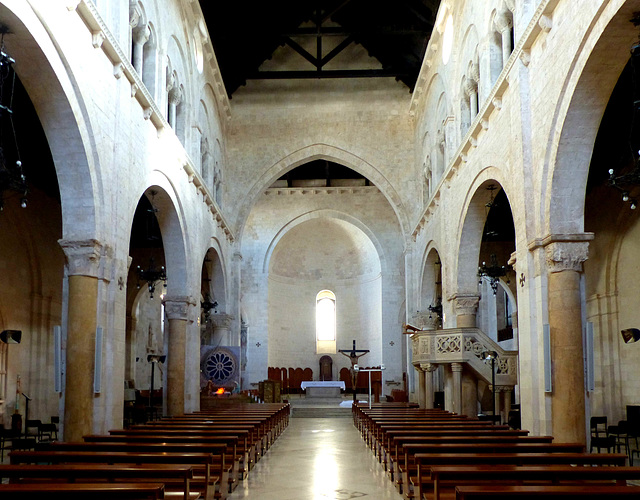Brindisi - La Gazzetta del Mezzogiorno
Brindisi - Loggia del palazzo Balsamo
Brindisi - Cattedrale di Brindisi
Brindisi - Cattedrale di Brindisi
Brindisi - Museo Archeologico Francesco Ribezzo
Brindisi - San Giovanni al Sepolcro
Brindisi - San Giovanni al Sepolcro
Brindisi - San Giovanni al Sepolcro
Brindisi - San Giovanni al Sepolcro
Brindisi - San Giovanni al Sepolcro
Brindisi - San Giovanni al Sepolcro
Brindisi - San Giovanni al Sepolcro
Brindisi - San Giovanni al Sepolcro
Brindisi - San Giovanni al Sepolcro
Lecce - Abbazia di Santa Maria di Cerrate
Lecce - Abbazia di Santa Maria di Cerrate
Lecce - Abbazia di Santa Maria di Cerrate
Lecce - Abbazia di Santa Maria di Cerrate
Lecce - Abbazia di Santa Maria di Cerrate
Lecce - Abbazia di Santa Maria di Cerrate
Lecce - Abbazia di Santa Maria di Cerrate
Roca Vecchia - Grotta della Poesia
Roca Vecchia - Torre di maradico
Conversano - Cattedrale di Conversano
Conversano - Cattedrale di Conversano
Conversano - Cattedrale di Conversano
Conversano - Cattedrale di Conversano
Conversano - Cattedrale di Conversano
Conversano - Cattedrale di Conversano
Bari - Basilica di San Nicola
Bari - Basilica di San Nicola
Bari - Basilica di San Nicola
Bari - Santa Maria del Suffragio
Bari - San Marco dei Veneziani
Bari - San Marco dei Veneziani
Bari - Santa Maria del Buon Consiglio
Bari - Lugomare
Bari - Cattedrale di San Sabino
Bari - Cattedrale di San Sabino
Bari - Cattedrale di San Sabino
Bari - Cattedrale di San Sabino
Bari - Cattedrale di San Sabino
Bari - Cattedrale di San Sabino
Bari - Piazza del Ferrarese
Bitetto - San Michele Arcangelo
Location
Lat, Lng:
You can copy the above to your favourite mapping app.
Address: unknown
You can copy the above to your favourite mapping app.
Address: unknown
See also...
Keywords
Authorizations, license
-
Visible by: Everyone -
All rights reserved
-
64 visits
Conversano - Cattedrale di Conversano


A settlement named Norba existed in the early times. It was conquered by the Romans in 268 BC and seems to have been abandoned around the time of the Visigothic invasion of Italy around 410.
The town recovered and was a bishopric seat from the 7th century on. This new town gained importance under the name Conversano, when, in 1054, the Norman lord Geoffrey, assumed the title of "Count of Conversano". He turned Conversano into the capital of a large county. After the count's death in 1101, the county was inherited by his sons Robert and Alexander. Alexander got defeated in 1132 by Roger II of Sicily, and the county was assigned to Roger`s brother in law Robert I of Basseville.
The cathedral was built in the 11th and 12th centuries on the site of an old place of worship and an earlier church. In 1358-1379 it was rebuilt, keeping its original form, and additional sculptures were added, especially on the facade.
In the Baroque period, the interior of the church was fundamentally remodeled. The interior walls were covered with stucco. In 1877 it was proposed to restore the beauty of the original Romanesque cathedral. This project was strongly opposed by the local public, but after the fire of 1911 completely destroyed the interior of the church, a rethinking process started and the restoration got started.
The reconstruction was completed in 1926 when the cathedral was reopened.
The town recovered and was a bishopric seat from the 7th century on. This new town gained importance under the name Conversano, when, in 1054, the Norman lord Geoffrey, assumed the title of "Count of Conversano". He turned Conversano into the capital of a large county. After the count's death in 1101, the county was inherited by his sons Robert and Alexander. Alexander got defeated in 1132 by Roger II of Sicily, and the county was assigned to Roger`s brother in law Robert I of Basseville.
The cathedral was built in the 11th and 12th centuries on the site of an old place of worship and an earlier church. In 1358-1379 it was rebuilt, keeping its original form, and additional sculptures were added, especially on the facade.
In the Baroque period, the interior of the church was fundamentally remodeled. The interior walls were covered with stucco. In 1877 it was proposed to restore the beauty of the original Romanesque cathedral. This project was strongly opposed by the local public, but after the fire of 1911 completely destroyed the interior of the church, a rethinking process started and the restoration got started.
The reconstruction was completed in 1926 when the cathedral was reopened.
Marco F. Delminho has particularly liked this photo
- Keyboard shortcuts:
Jump to top
RSS feed- Latest comments - Subscribe to the comment feeds of this photo
- ipernity © 2007-2025
- Help & Contact
|
Club news
|
About ipernity
|
History |
ipernity Club & Prices |
Guide of good conduct
Donate | Group guidelines | Privacy policy | Terms of use | Statutes | In memoria -
Facebook
Twitter

Sign-in to write a comment.